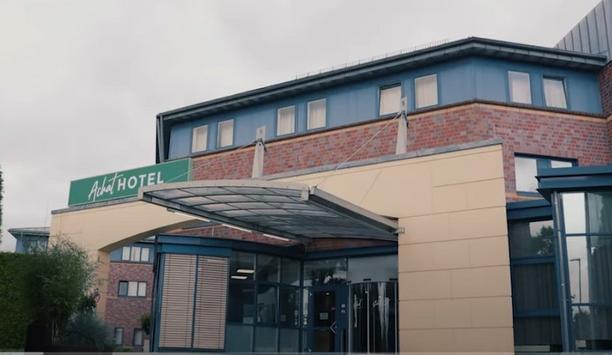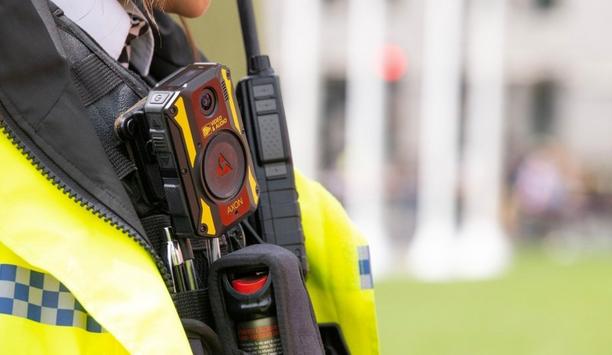"De Fußball kummt hääm" - "Football is coming home" - this phrase uttered in Palatinate dialect is a clear indication of where the people here believe that the home of football is: in Kaiserslautern. Well, since the 1950s at least. During the 1950s, 1. FC Kaiserslautern, the city's football club, won the German championship twice (1951 and 1953). At that time, Fritz and Ottmar Walter, along with three other club members, formed the backbone of the legendary German national team that won the World Cup in Bern in 1954. In 1991 und 1998, the team won the German championship yet again and in 1990 and 1996, the DFB Cup. In 2006, Kaiserslautern was proud to be one of the 12 World Cup cities in Germany. Needless to say, football has become a celebrated tradition in the friendly Palatinate metropolis.
High-tech
Kaiserslautern, with its population of 105,000, has also made quite a name for itself internationally as an IT location during the past few years. In the 1990s, for example, the so-called PRE-Park was built, in which businesses in the information and communications industry have settled and 75 companies with 2,350 jobs have found an attractive location. A follow-up project, the "PRE-Uni-Park", which was launched in 2003, is a place where modern research companies have set up business. No wonder that state-of-the-art technology has been used in Kaiserslautern in many aspects of football stadium security. WVE GmbH, for example, has installed a complex traffic monitoring system throughout the entire city, at the autobahn exits and in large parking lots. After all, during the World Cup it was 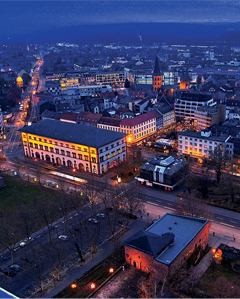 high priority to channel the traffic flow so that the fans were never in danger of being offside.
high priority to channel the traffic flow so that the fans were never in danger of being offside.
An affordable solution
57 MOBOTIX network cameras make up the main part of the traffic surveillance system. The cost for all the equipment - including the cameras, the control center and installation: approximately EUR 200,000. This means that of all the 12 World Cup cities, Kaiserslautern has by far the most cost effective traffic monitoring system.
All clear
Saturday, June 17, 2006, 9 pm: The whistle is blown to start the World Cup match between Italy and the USA. For the Americans, it is almost a home game. After all, there are more than 40,000 US soldiers and family members stationed in Kaiserslautern. Over 100,000 visitors are in the city, 46,000 in the sold-out Fritz-Walter Stadium, the rest on the fan mile and at the public-viewing locations downtown. With this amount of traffic, it is a good thing that unrestricted mobility was one of the top priorities in the organisation of the World Cup, and without a doubt, one of the biggest challenges a World Cup city had to face.
"That's why we created 15,000 parking spaces on the outskirts of the city and considerably increased the frequency and range of public transit, measures we initiated to try and keep vehicles out of the city center," explained Chief-of-Police Siegfried Ranzinger, who was responsible for all the traffic flow management and control in Kaiserslautern during the World Cup. "In addition, we set up four different main routes that led to the Fritz-Walter Stadium - particularly for the shuttle busses. Traffic had to move along freely on these routes."
Reliably clear images
Jürgen Dressing, who heads the Department of Law and Order in Kaiserslautern, commissioned the community services provider, WVE, with the technical project to develop, plan and implement the required traffic monitoring system. Together with Dieter Burkey, master electrician, and Ralf Kattler, technician, project leader Michael Theis was responsible for the selection of the features and functionality as well as installation of the cameras.
An event with the whole world watching - it was absolutely vital that everything worked right down to the last detail. Is that why the project group decided to go with MOBOTIX cameras? "Their reliability was certainly one of the most important reasons," Michael Theis confirmed. "But the cameras also deliver excellent images, are network-compatible and good value for the money. Besides that, we are also using these products in other projects and are very satisfied with the results."
UMTS transmission
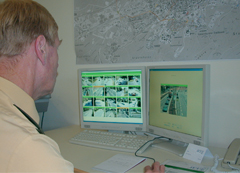 To avoid the costs of excavation and laying of a complicated cable network, the project group opted for a mobile solution for the transmission of the image signals: all MOBOTIX cameras were networked with the control center using Mobile Connect Cards from Vodafone and Mobile Connect Boxes - a development of system supplier konzeptpark GmbH. In other words, the image data was transmitted via UMTS. Each camera sent a 640 x 480-pixel image every 30 seconds, which the UMTS bandwidth was easily able to accommodate. The low frame rate was chosen to save on transmission costs, while still allowing reliable evaluation of the prevailing traffic conditions. If desired, it would be possible to have the images sent every ten seconds. Another advantage of this solution was that the camera positions could be changed quickly and at short notice meaning that the complete concept was not only affordable and flexible, but also quick and easy to install.
To avoid the costs of excavation and laying of a complicated cable network, the project group opted for a mobile solution for the transmission of the image signals: all MOBOTIX cameras were networked with the control center using Mobile Connect Cards from Vodafone and Mobile Connect Boxes - a development of system supplier konzeptpark GmbH. In other words, the image data was transmitted via UMTS. Each camera sent a 640 x 480-pixel image every 30 seconds, which the UMTS bandwidth was easily able to accommodate. The low frame rate was chosen to save on transmission costs, while still allowing reliable evaluation of the prevailing traffic conditions. If desired, it would be possible to have the images sent every ten seconds. Another advantage of this solution was that the camera positions could be changed quickly and at short notice meaning that the complete concept was not only affordable and flexible, but also quick and easy to install.
On location via remote control
The camera images transmitted via a receiving station and a VPN tunnel were to be stored on an FTP server. "In contrast to the monitoring systems used in other World Cup cities, the images were 4 times higher in VGA format resolution, i.e. transmitted with 640 x 480 pixels," Michael Theis continued. "That's why we were able to obtain a much higher degree of detail at almost the same image size and 30 % JPEG quality compared to the otherwise usual small CIF format with 352 x 288 pixels. This made it possible to get an exact impression of the situation on location directly in the traffic control center." A corresponding server-client application and the easy-to use user interface, which was individually customized to meet the special needs of the police, also ensured that everything was running smoothly.
"Invaluable assistance"
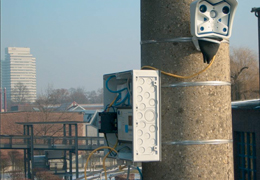 "The camera monitoring system was an incredible help in getting our job done," Chief-of-Police Siegfried Ranzinger added. "It allowed us to monitor all relevant traffic intersections at the same time, to assess how complicated a possible problem might become and to react as quickly as possible."
"The camera monitoring system was an incredible help in getting our job done," Chief-of-Police Siegfried Ranzinger added. "It allowed us to monitor all relevant traffic intersections at the same time, to assess how complicated a possible problem might become and to react as quickly as possible."
Project leader Michael Theis is happy that the system not only stood the test in advance during the German Football League trial games, but also proved itself during the World Cup. By the way, USA was able to manage a 1:1 tie against Italy, despite the fact that they were a player short. As expected, there were no signs of traffic chaos, neither before nor after the game.



